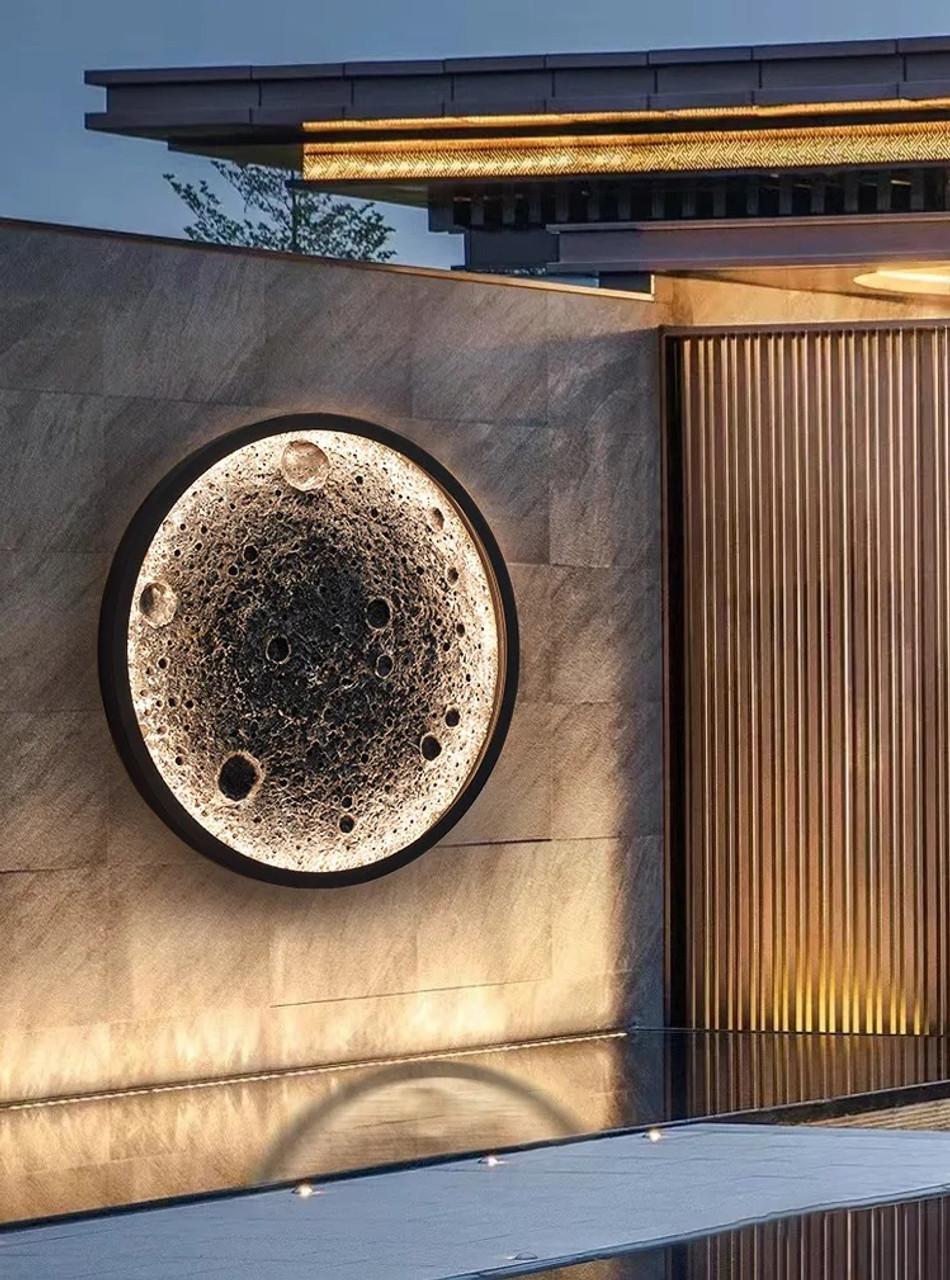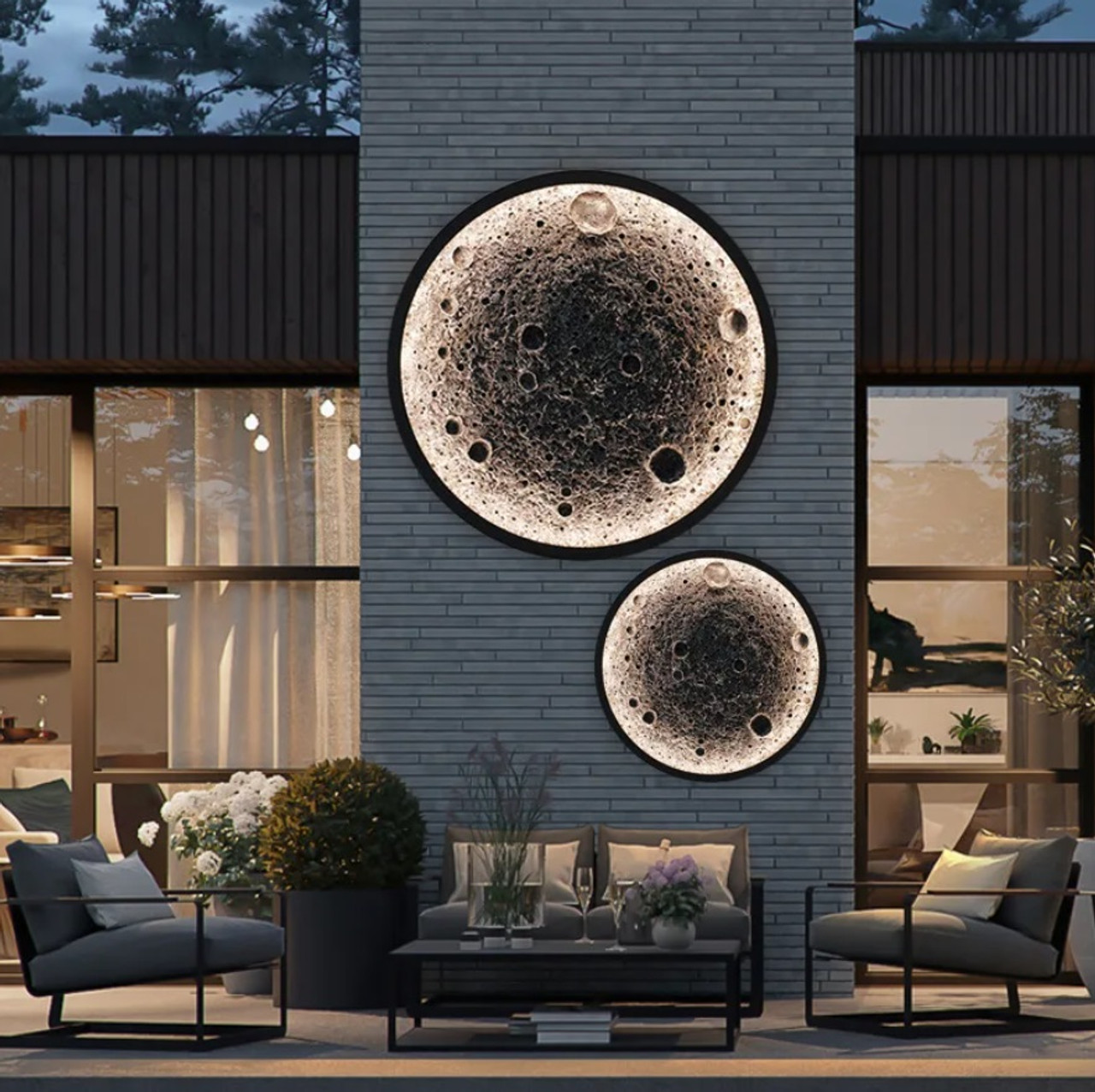10 Architectural Design Principles - SERIES 4- An Architects Handbook - Architect Guide
Aug 03, 2024
Architectural Design Principles - SERIES 4- An Architects Handbook - Architect Guide
An Architects handbook guide, we discuss another top 10 must know topics for an architect beginner or professional alike.
1. In architecture what is a static composition?
In architecture, a static composition refers to a design approach that emphasizes stability, symmetry, and balance, creating a sense of order and permanence. This type of composition typically relies on regular, geometric forms, uniform materials, and a harmonious arrangement of elements that do not suggest movement or dynamism. Static compositions are often characterized by their deliberate and careful placement of structural elements and spaces, aiming to convey solidity, durability, and a timeless quality. The use of symmetry and repetition plays a key role in achieving a serene and ordered appearance, making the architectural work appear anchored and immutable.
Examples of static compositions in architecture can be found across various periods and styles, illustrating the timeless appeal of stability and order in design. Here are a few notable examples:
1. The Parthenon in Athens, Greece
This ancient Greek temple epitomizes static composition through its use of symmetry, proportion, and the Doric order. Its rectangular plan, evenly spaced columns, and pedimented ends convey a sense of balance and permanence, emblematic of classical architecture's ideals.
2. Villa Rotonda (Villa Almerico Capra) by Andrea Palladio
Located near Vicenza, Italy, Villa Rotonda is renowned for its symmetrical plan and four identical façades, each featuring a classical portico. This Renaissance villa exemplifies static composition through its harmonious proportions and the emphasis on geometric clarity and order.
2. What are dynamic compositions in architecture?
In architecture, dynamic compositions are designed to capture and guide the viewer's attention through the use of movement, rhythm, and contrast within the spatial arrangement. Unlike static compositions, which rely on symmetry and balance to convey a sense of stability and permanence, dynamic compositions employ a variety of strategies to create a sense of motion and interaction, encouraging the viewer’s eyes to explore the space. Here's how dynamic compositions achieve this effect:
1. Lines and Directional Forces
Dynamic compositions often utilize leading lines and directional forces that guide the viewer's gaze through the architectural space. Diagonal lines, curvilinear forms, and sharp angles can act as visual cues that suggest movement and direct the eye from one element to another, creating a visual journey.
2. Contrast and Variety
By incorporating contrasting elements such as light and dark areas, textured and smooth surfaces, or large and small forms, dynamic compositions create visual interest that encourages exploration. This variety ensures that the viewer's gaze is continually moving, discovering new details and relationships between elements.
3. Interplay of Light and Shadow
Dynamic compositions leverage the dramatic effects of light and shadow to create depth and motion. Light can highlight certain architectural features, drawing the eye toward them, while shadows can create a sense of depth and mystery, encouraging the viewer to look closer.
4. Asymmetry and Unbalanced Elements
Asymmetry and the strategic use of unbalanced elements can create a sense of dynamism and tension within a composition. These elements can appear to be in motion, suggesting a narrative or sequence that the viewer follows, enhancing the overall sense of movement within the space.
5. Varied Perspectives and Framing
Incorporating multiple viewpoints or framing views in unexpected ways can also contribute to a dynamic composition. By designing spaces that offer changing perspectives as one moves through them, architects ensure that the viewer’s experience is continually evolving, prompting them to look around and engage with the space from different angles.
6. Rhythm and Repetition
Rhythm, created through the repetition of forms or elements with variations, can guide the viewer’s gaze across the space. The predictability of repetition combined with the surprise of variation works to keep the viewer’s attention moving along the sequence of elements.
Dynamic compositions in architecture are not just about visual aesthetics; they are carefully crafted to engage the viewer physically and emotionally, encouraging exploration and interaction with the space. By using these techniques, architects can create environments that are not only visually stimulating but also deeply engaging, offering a rich, layered experience that invites viewers to look around and discover the space in its entirety.
3. When creating balanced compositions in architecture what are moves and counterpoints used for?
In the creation of balanced compositions in architecture, "moves" and "counterpoints" are instrumental concepts that architects use to achieve harmony, dynamism, and visual interest in their designs. Understanding their roles can shed light on the intricate process of architectural composition.
Moves
"Moves" in architecture refer to deliberate design actions or decisions that shape the form, function, and aesthetic of a space or structure. These can include the placement of architectural elements (like windows, doors, or walls), the manipulation of form (such as the addition of a curve or angle), or strategic decisions about materiality and texture. Moves are the building blocks of architectural design, each contributing a distinct aspect or quality to the overall composition.
In the context of balanced compositions, moves are used to:
- Establish a visual or functional anchor within a space.
- Direct the flow of movement and sightlines.
- Create focal points or areas of interest.
- Integrate with the surrounding context or landscape.
Counterpoints
"Counterpoints" in architecture act as a response or contrast to the initial moves, providing a way to achieve balance and cohesion within the design. Counterpoints can be subtle or bold, and they work by offsetting or complementing the design moves. They introduce variety and tension, which are essential for creating engaging and dynamic spaces.
In balanced compositions, counterpoints are used to:
- Introduce contrast, whether through form, material, color, or texture, to prevent monotony.
- Balance visual weight across the composition, ensuring that no single element overpowers the others.
- Enhance spatial relationships by creating a dialogue between different parts of the design.
- Emphasize particular elements or features by setting them against a contrasting backdrop.
The Interplay of Moves and Counterpoints
The interplay between moves and counterpoints in architectural design is akin to a conversation, where each decision responds to or builds upon the previous ones. This dynamic process allows architects to explore creative solutions and to craft spaces that are not only functional but also emotionally resonant and aesthetically pleasing. By carefully considering how moves and counterpoints work together, architects can create balanced compositions that are harmonious yet vibrant, offering users a rich and varied spatial experience.
In summary, moves and counterpoints are essential tools in the architect’s repertoire, used to craft balanced compositions that engage, inspire, and respond to human needs and the environment. Through the strategic use of these design principles, architects achieve spaces that are thoughtfully integrated and beautifully realized.
4. In architecture how does thinking of plans as a 2d or 3d composition help in resolving difficulties?
Thinking of architectural plans in both 2D and 3D compositions is crucial for effectively resolving difficulties in design and construction for several reasons:
Spatial Understanding: 3D visualization helps architects and clients to better understand spatial arrangements. It's easier to grasp the scale, depth, and relationship between different elements in a design when viewing it in three dimensions. This can prevent misinterpretations and errors that might arise from solely 2D plans.
Problem Identification and Solution: 3D models allow architects to identify potential problems early in the design process, such as spatial conflicts, structural issues, or materials clash. By visualizing how different parts of the building interact in three dimensions, architects can devise solutions before construction begins, saving time and resources.
Integration of Structural Elements: 3D thinking helps in the effective integration of structural elements with architectural designs. It allows architects to plan how structural components like beams, columns, and load-bearing walls integrate with aesthetic elements, ensuring structural integrity without compromising the design vision.
Light and Shadow Analysis: By considering the 3D aspects of a design, architects can analyze how natural and artificial light will interact with the building at different times of the day and year. This is crucial for creating energy-efficient buildings and pleasant interior environments.
Material and Texture Visualization: 3D models enable architects and clients to visualize the textures and materials of the building, providing a more comprehensive understanding of the final look and feel. This helps in making more informed decisions regarding materials, which can affect both aesthetics and functionality.
Navigation and Flow: 2D plans provide the layout, but 3D visualizations offer insights into how people will move and interact within the spaces. This is crucial for optimizing the flow through the building, enhancing user experience, and ensuring safety regulations are met.
Stakeholder Communication: 3D representations can be more easily understood by non-professionals compared to 2D drawings. This facilitates clearer communication between architects, clients, contractors, and other stakeholders, ensuring everyone has a shared understanding of the project.
Incorporation of Context: 3D thinking allows architects to consider the building in relation to its surroundings. This includes the impact of the site's topography, neighboring buildings, and local environment on the design, which can influence everything from building orientation to window placement.
Energy Analysis and Sustainability: Modern 3D modeling software can simulate energy consumption, allowing architects to optimize the building design for sustainability and energy efficiency. This includes considerations like solar gain, ventilation, and insulation.
By leveraging both 2D and 3D compositions, architects can ensure that their designs are not only aesthetically pleasing but also functional, safe, and sustainable. This dual approach allows for a more holistic understanding of architectural projects, leading to higher quality outcomes and more efficient problem-solving throughout the design and construction process.
5. What is colour theory and why should an architect make use of it?
Color theory is a comprehensive guide for the use of color in art and design, grounded in the science of how humans perceive color. It encompasses a set of principles and guidelines that help designers combine colors in harmonious ways to convey the desired message or evoke specific emotions. Key elements include the color wheel, color harmony, and the context in which colors are used. Color theory is divided into several components:
Color Wheel: A visual representation of colors arranged according to their chromatic relationship. Primary colors (red, yellow, blue) are the basis, from which secondary (green, orange, purple) and tertiary colors are derived.
Color Harmony: The practice of combining colors in a way that is pleasing to the eye. This is achieved through various schemes, such as complementary, analogous, and monochromatic, each offering different vibes and visual effects.
Color Context: How color behaves in relation to other colors and shapes, affecting perception significantly. The same color can appear differently depending on its context, influencing mood and spatial perception.
Affects Mood and Perception: Color has a profound impact on the mood and atmosphere of a space. For instance, blues and greens are calming, while reds and oranges can energize a space. Architects use color theory to create environments that reflect the desired emotional or psychological impact.
Enhances Aesthetics: Through the strategic use of color, architects can enhance the beauty and appeal of a structure. Color can highlight architectural details, create depth, and bring unity to the design.
Influences Spatial Perception: Color can alter the perception of space; light colors can make a room feel larger and brighter, while dark colors can make it feel more intimate and smaller. Architects utilize color to manipulate these perceptions, improving the functionality and feel of the spaces they design.
Guides User Behavior: Color can guide the flow of movement within a space and highlight areas of importance. For example, bright colors can draw attention to emergency exits or areas that require attention.
Reflects Branding or Purpose: For commercial or institutional buildings, color can reflect the identity or purpose of an organization. Architects might use specific color schemes to align with a brand's image or the function of a facility, such as using calming colors in hospitals to promote a healing environment.
Enhances Sustainability: Certain colors can influence the thermal dynamics of a building. Light-colored exteriors reflect more sunlight, reducing cooling costs in hot climates, while dark colors can be beneficial in colder climates by absorbing heat.
Improves Wayfinding: Color can be an effective tool in wayfinding, helping users navigate complex spaces easily. Different color themes or accents can delineate areas, making it easier for people to find their way.
In summary, architects use color theory not just for aesthetic purposes but as a strategic tool to influence perception, evoke emotions, and solve functional problems within a space. The thoughtful application of color enhances the usability, sustainability, and overall impact of architectural designs.
6. What are the 3 levels of knowing in architecture?
In architecture, understanding and knowledge can be categorized into various levels or types, often discussed in the context of how architects grasp and apply principles, techniques, and the essence of design in their work. While there might not be a universally accepted classification called "the 3 levels of knowing in architecture," a common approach to categorizing knowledge in the field (and in many other disciplines) includes:
Technical Knowledge (Know-What): This level includes the factual and procedural knowledge about architecture, such as the understanding of materials, construction methods, building codes, and design principles. It's about knowing what needs to be done to achieve certain outcomes and to meet specific requirements. This is the foundational level of knowledge that enables architects to design buildings that are structurally sound, functional, and compliant with regulations.
Practical Knowledge (Know-How): This is the ability to apply technical knowledge in real-world situations to solve problems, make decisions, and create effective designs. It involves skills, techniques, and the capacity to use tools and methods effectively. Practical knowledge is gained through experience, practice, and often through a process of trial and error. It encompasses the ability to translate abstract ideas into tangible results and to adapt to the complexities and unpredictabilities inherent in architectural projects.
Conceptual/Theoretical Knowledge (Know-Why): This level of understanding relates to the theories, concepts, history, and philosophies underlying architecture. It involves a deeper comprehension of the reasons behind architectural practices, design choices, and the impact of architecture on individuals, communities, and environments. This knowledge allows architects to question, innovate, and develop new approaches and solutions. It's about understanding the broader context of architecture and its significance beyond the physical aspects of buildings.
These levels are interrelated and not strictly hierarchical; effective architectural practice requires a blend of all three. Additionally, some frameworks might discuss other dimensions of knowledge in architecture, such as critical thinking, ethical understanding, and creative innovation. The exact terminology and categorization can vary, but the essence is to capture the range of knowledge that architects use to inform their work and contribute to the built environment.
7. In architecture what are some examples of unnecessary complexity?
In architecture, unnecessary complexity can arise in various aspects of design and construction, often leading to increased costs, extended project timelines, and challenges in maintenance and usability. Here are some examples where complexity might be considered unnecessary:
Overly Complex Forms: While unique and innovative shapes can make a building stand out, excessively complex geometries can significantly increase construction and material costs. They may also pose challenges for future modifications, maintenance, and functionality. Sometimes, simpler forms can achieve similar aesthetic and functional goals more efficiently.
Excessive Customization: Custom elements and details can give a project a unique character, but over-customization of components such as windows, doors, and fittings can make replacements and repairs difficult and costly. Using standard sizes and materials where possible can often be more practical.
Redundant Systems: Implementing multiple systems that serve similar functions, such as heating or cooling systems, without a clear rationale can lead to unnecessary complexity. This not only increases initial costs but also complicates maintenance and operation.
Complicated Façade Treatments: While façades play a crucial role in a building's appearance and environmental performance, overly complicated façade systems can be difficult to fabricate, install, and maintain. Simpler façade solutions can sometimes provide similar benefits in terms of aesthetics, energy efficiency, and functionality with less complexity.
Over-Engineering: Designing structural systems or components to far exceed necessary standards can introduce unnecessary complexity and material use. While safety and durability are paramount, optimization according to actual needs and codes can prevent over-engineering.
Complex Interior Layouts: Intricate and non-intuitive interior layouts can complicate navigation and use of spaces. This includes excessive partitioning of spaces, confusing circulation paths, and lack of clear zoning. Simplifying the layout can enhance user experience and functionality.
Multiple Materials and Finishes: Using a wide variety of materials and finishes within a single project can create a disjointed aesthetic and increase the complexity of construction and future refurbishment. A more restrained palette can achieve coherence and elegance while simplifying construction and maintenance.
Technological Overload: Incorporating a high level of technology and automation in buildings can offer convenience and efficiency, but it can also lead to systems that are difficult to manage, maintain, and update. Considering the actual needs and benefits of technological features can help in finding a balance.
While complexity in architecture can often be justified by the benefits it brings in terms of aesthetics, functionality, or sustainability, it's crucial to assess whether the added value outweighs the potential drawbacks in cost, practicality, and long-term viability. Simplifying a design without compromising its quality and performance often requires a deep understanding of the essentials of architecture and a thoughtful approach to problem-solving.
8. An architect needs to learn to say NO to a client.
An architect's role is not just to bring a client's vision to life but also to ensure that the design and execution of a project are practical, sustainable, economically viable, and compliant with legal and safety standards. Learning to say "no" to a client is a critical skill for architects for several reasons:
Feasibility and Safety: Architects have the expertise to assess the feasibility of design ideas, considering factors like structural integrity, building codes, and safety regulations. If a client's request compromises any of these aspects, the architect must communicate the issues and recommend alternatives.
Budget Constraints: Clients often have specific budgets within which they want to complete their projects. Some requests might significantly exceed these budgets due to materials, complexity, or technology required. Architects need to guide clients toward solutions that achieve their goals without overspending.
Sustainability and Ethics: Architects today are increasingly called upon to design with sustainability in mind, reducing environmental impact and promoting energy efficiency. If a client's request goes against these principles, an architect has a responsibility to argue for more eco-friendly options.
Aesthetic and Functional Harmony: Sometimes, clients might ask for design elements or features that clash with the overall concept of the project or that might impair the functionality of a space. Architects must balance the client's desires with the principles of good design and usability.
Legal and Regulatory Compliance: Every building project must adhere to a complex set of local, state, and national regulations and codes. If a client desires something that violates these regulations, the architect must refuse and suggest legal alternatives.
Realistic Timelines: Clients may have unrealistic expectations regarding timelines for the completion of a project. Architects need to set realistic expectations based on the project's scope, complexity, and unforeseen circumstances like delays in material supply or bad weather.
Maintaining Professional Integrity: Architects have a duty to uphold the standards of their profession, which means refusing requests that could compromise their integrity or that of the profession. This includes refusing to cut corners, use substandard materials, or engage in unethical practices.
Long-term Viability: Clients might not always consider the long-term implications of their requests, such as maintenance challenges, operational costs, or adaptability of the space for future needs. Architects need to consider these factors and guide their clients accordingly.
In these situations, the architect's expertise and professional judgment are invaluable. Saying "no" is not about denying the client's wishes but about guiding them to the best possible outcome. Effective communication, offering alternatives, and educating the client about the implications of their choices are essential strategies when architects find themselves needing to say "no." This approach ensures that the final project is safe, functional, aesthetically pleasing, and aligns with the client's vision as closely as possible within the bounds of practicality and professionalism.
9. Why are rectangular homes better than square homes in terms of flow of movement?
The perception that rectangular homes may be better than square homes in terms of flow of movement can be attributed to several factors related to design flexibility, spatial distribution, and functionality. It’s important to note, however, that "better" is subjective and greatly depends on the specific needs of the occupants, the nature of the site, and the overall design goals. Here’s why rectangular layouts might be seen as advantageous for movement and flow:
Linear Circulation: Rectangular homes naturally lend themselves to linear circulation paths, which can be more straightforward and efficient for moving from one end of the home to the other. This can be particularly beneficial in elongated plots or when the home needs to be oriented in a specific direction to take advantage of views, sunlight, or other environmental factors.
Zoning and Separation of Spaces: The elongated shape of rectangular homes can facilitate a clearer separation of spaces, making it easier to designate different areas for specific functions (e.g., living areas on one side, sleeping quarters on the other). This can help in creating a smooth flow between public and private spaces, or between daytime and nighttime areas.
Flexibility in Layout Design: Rectangular plans might offer more flexibility in arranging spaces and furniture, allowing for a variety of configurations that can accommodate different activities and furniture layouts without interrupting the main flow of movement through the home.
Natural Light Distribution: Depending on the orientation, rectangular homes can allow for better distribution of natural light throughout the day. Longer walls mean more opportunities for windows and doors, which can be strategically placed to enhance cross-ventilation and natural illumination, contributing to a more comfortable and inviting living environment.
Adaptation to Site Constraints: Many urban or suburban lots are rectangular, making a rectangular home design a practical choice for maximizing the use of the site. This shape can more easily accommodate the natural boundaries of the property, driveway access, and garden or yard space, while still allowing for an efficient internal layout.
Economical Construction and Expansion: Rectangular homes can be simpler and more economical to build, with straightforward structural requirements and less waste. Additionally, expanding a rectangular home is often more straightforward, as additions can be made at either end or along the long side without significantly disrupting the existing flow of the home.
It's worth mentioning that the effectiveness of a square versus rectangular layout also depends on the overall size of the home. Smaller homes might function perfectly well with a square plan, while larger homes might benefit from the additional flexibility and separation a rectangular plan can offer. Ultimately, the best design is one that thoughtfully considers the occupants' lifestyle, the natural and built environment, and the intended use of each space within the home.
10. When might an architect choose to deviate from a simple square or rectangular form?
Efficiency of Circulation: In very large or complex buildings, a simple square footprint might not provide the most efficient pathways for movement throughout the space. Longer distances and lack of direct routes can make circulation less efficient. Architects might opt for different shapes or add courtyards, atriums, or wings to improve circulation paths.
Dynamic Spaces: Non-square forms might be chosen to create dynamic, interesting spaces that encourage exploration and interaction. Curved walls, varying angles, and unconventional shapes can create a sense of movement and flow within the building itself.
Adaptation to Site: The shape of the building is often influenced by the site's contours, existing structures, and natural elements. Architects might design non-square buildings to better adapt to these conditions, optimizing views, sunlight, and protection from wind or noise.
Visual Interest and Symbolism: Square and rectangular buildings can be seen as more traditional or conservative in design. To convey modernity, innovation, or specific symbolic meanings, architects may opt for more complex shapes. These shapes can also break up the monotony in urban landscapes or stand out as landmark structures.
Environmental Considerations: The orientation and shape of a building significantly affect its thermal performance and energy efficiency. Non-square shapes might be used to maximize natural lighting, ventilation, and solar gain or to minimize exposure to harsh weather conditions.
Social and Behavioral Aspects: The way people interact with and within a space can be influenced by its shape. Non-linear designs might be used to encourage social interactions, control crowd flow, or create intimate spaces within larger environments.
Acoustic Performance: In buildings where acoustics are a priority, such as concert halls and theaters, the interior shape is crucial for sound distribution. A square shape might not offer the best acoustics, leading architects to explore other forms.
While these considerations can influence the choice of building shape, it's not accurate to say that square buildings are generally avoided. Many successful architectural designs are based on square or rectangular forms, chosen for their simplicity, functionality, and timeless aesthetics. The key is how the interior and exterior spaces are designed to meet the needs of the users, respect the environment, and achieve the intended purpose of the building. The flow of movement is just one of many factors architects consider during the design process.











